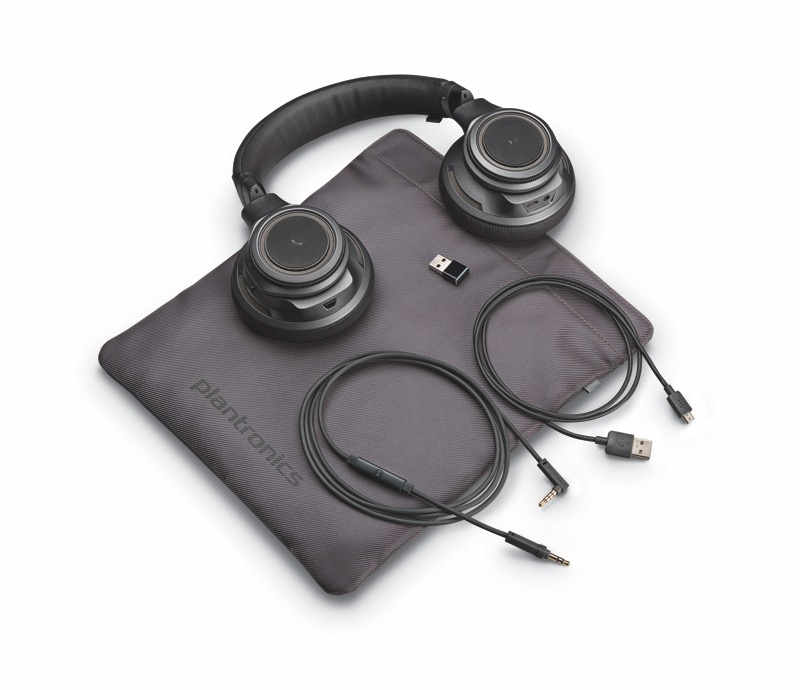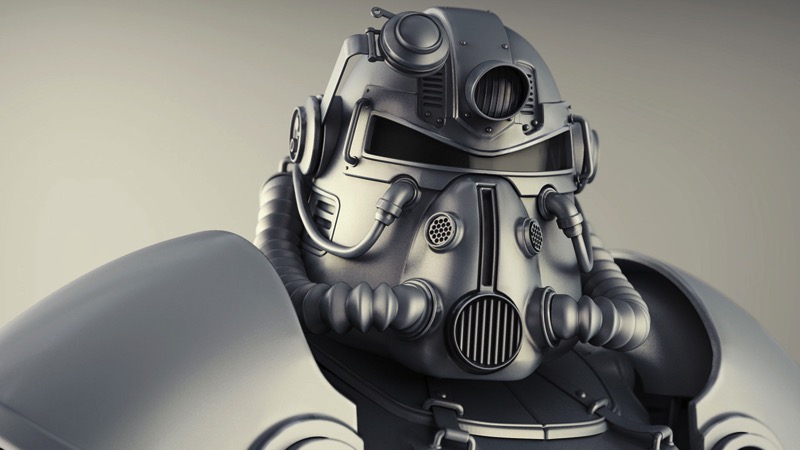 Now that we’ve had a chance to talk about the background of the Brotherhood of Steel (BoS), let’s discuss their appearance in Fallout 4 (FO4) and the morally grey storyline they bring to the table.
Now that we’ve had a chance to talk about the background of the Brotherhood of Steel (BoS), let’s discuss their appearance in Fallout 4 (FO4) and the morally grey storyline they bring to the table.
*****SPOILERS AHEAD!*****
The BoS that you meet in FO4 takes two forms. One that you meet up to the mid-point of the main quest, and another that makes their appearance in Act II.
Prior to the end of Act II, your only interaction with the BoS is Paladin Danse, Scribe Haylen, and Knight Reese; the only remaining members of a BoS Recon Squad sent to investigate the Commonwealth. While they’re not the first to visit the Commonwealth, they are the most successful recon team to date, having established a foothold in an abandoned police station and started operations.
The team was sent from the East Coast BoS group (headquartered in the Capitol Wasteland – formerly Washington DC), and is charged with scouting the Commonwealth (formerly Boston and the surrounding area in Massachusetts). So far, they’re not doing great. Multiple members of their team have been killed in feral Ghoul and Super Mutant attacks, and the three of them are all that’s left. To make matters worse, they can’t create a strong enough signal to establish radio contact with The Citadel – the BoS headquarters located in the ruins of the Pentagon in the Capitol Wasteland – to call for support. What they have done, however, is found a strange signal that can’t be explained yet, but definitely points to powerful and advanced technology being used in the Commonwealth… somewhere.
Danse then recruits you (if you agree to it) to recover a powerful transmitter component – introducing you to the Institute (by reference) and their Synths (who crash your search party) along the way. This initial introduction leads to a series of radiant quests that allow you to discover the Commonwealth and learn more about the Brotherhood as you go. At the end of that mission, you’re given a chance to join the Brotherhood as a provisional member if you wish. If you agree, eventually you are given a quest to find out what happened to the last recon squad that came to the Commonwealth, and then you can continue radiant quests until you get to the mid-point of the main quest, where things change.
The BoS shown by the recon squad gives some major hints that things have changed for the Brotherhood since FO3. The recon squad is extremely mistrustful of outsiders (except for one member), and is hell-bent on killing every non-human they come across. Half of the radiant quests require you to go out and obliterate every mutant, Raider, and Ghoul you come across in a specific area. The BoS Recon members also wall themselves off from the rest of the Commonwealth (quite literally), and while there is an interest in cleaning up the area, helping civilians doesn’t rank high on their agenda.
Danse and the others also hint at the fact that the East Coast BoS is no longer under the guidance of Elder Lyons, but very little of who is in charge is revealed until after the mid-point of the main quest itself. All you know when you are given the opportunity to join is that they will help the civilians of the Commonwealth, but only as a means to their own ends of acquiring any and all pre-war technology and destroying all non-humans out there. At this point, their stance on sentient (non-feral) Ghouls is somewhat murky. They do not actively seek to destroy them, but neither do they want anything to do with them or go out of their way to help these former-human mutants.
OK, one last warning, ***MAJOR SPOILERS AHEAD***
At the mid-point of the game’s main quest, the player (known as the Sole Survivor) encounters a scripted event showing the Prydwen, a giant rigid airship that serves as a mobile base of operations for the Brotherhood in the East. Surrounded by, and launching, Vertibirds (Vertical Take Off and Landing craft that resemble helicopters with their blades on wing-pontoons) it flies into the Commonwealth skies and takes up residence at the ruins of Boston Airport (patterned on the real-world Logan Airport). Your radio then picks up the newly-boosted broadcast (thanks to your assistance in obtaining the transmitter) ordering you back to the police station, where Danse escorts you aboard the Prydwen to be introduced to the rest of the Brotherhood.
It’s here that you meed Elder Arthur Maxson, a direct descendent of the founder of the BoS, and current leader of the East Coast Brotherhood. Maxson informs you (and the rest of his BoS troops) that the Brotherhood has established a base of operations in the Commonwealth to wage a war on their greatest threat to date – The Institute. Since the BoS quarantines all pre-war and/or advanced technology, and the Institute is a massive hive of such technology, they must either contain or wipe out the Institute itself – and anyone who is helping them or their creations.
This is where the BoS starts to feel evil. Synths are possibly sentient, artificially intelligent androids. While feared by most of the Commonwealth, synths can easily be seen as semi-human, no different than non-feral Ghouls, and those who have left Institute control seem to be productive members of society (for good or bad). By this time, you have also met an earlier generation synth who is not only a good guy, but an active and valued member of one of the largest human communities – Diamond City. He’s definitely not a tool of the Institute, and certainly wouldn’t be considered a threat to anyone but those who make him their enemies first.
You may also have discovered the Railroad. Based on the Underground Railroad that helped ferry slaves to freedom in the Civil War era of US History, these humans and synths altruistically work to get synths away from the Institute and out of the Commonwealth where they can lead normal lives. The synths working for the Railroad certainly appear sentient, and definitely are working for what could be considered the greater good. At any rate, they are not controlled by the Institute in any way – far from it, they want the Institute destroyed and all synths freed.
Finally, if you played FO3, you may have met a synth who not only became an upstanding member of society in the Capitol Wasteland, but ended up being a trusted member of law enforcement to boot. For all intents and purposes, that synth is indistinguishable from any human being – and in fact remains undiscovered unless you purposely help to identify them. Even on identification, you find that this synth doesn’t even know they are a synth – the new memories and identity given to them by the Railroad makes them completely oblivious to the fact they aren’t human in the first place.
So the BoS waging an all-out war against the Institute *and* their synths means potentially wiping out a sentient race that had no say in their creation, but has shown themselves capable of independent thought and – in many cases – a desire for freedom beyond their programming. Maxson explains that destroying the synths is critical, as the Institute (based on the fact that synths escape) clearly has no control over their creations; and that those who have not broken from the Institute have even infiltrated human societies as undercover spies. The short story there is that a Generation 3 Synth is a biological machine, indistinguishable from a human being even when “taken apart” and therefore able to be physically altered to look, speak, and act exactly like a living human, who’s place they then take. The unfortunate target of this process is kidnapped to the Institute, and held indefinitely or (it’s hinted) killed; replaced by a synth double with all of their memories, mannerisms, and identity.
On top of this, the Brotherhood also tasks you with (optionally) commandeering farms and their produce to feel and fuel BoS operations. This is a radiant quest given to you by one of the BoS commanders on the Prydwen, and is not a mandatory part of your BoS membership. The problem is that, even if you don’t partake in that activity yourself, others are doing it on the BoS’s behalf.
Finally, siding with the Brotherhood in the main quest-line can result in being forced to wipe out other factions. Some of these factions may have become close friends over the course of the remainder of your gameplay, so it’s a decision not to be taken lightly; and one the BoS will not allow you to get out of.
It’s a moral grey-area all around, and made many players perceive the BoS as an evil force, or at the very least chaotic-neutral. The argument has some solid ground to stand on, but I’ve always seen it another way. The BoS is the best chance the Commonwealth has to survive.
I base my opinion on several facts:
– Without the BoS, there isn’t really any faction that can – or would be willing to – bring order and prosperity to the Commonwealth. The Railroad is interested only in saving synths, they don’t seem to really care what else is going on. The Minutemen are great as an idea, but have proven they cannot remain a coherent force for long before the organization collapses. The Institute? Well, they sabotaged the closest thing to a unified government the Commonwealth ever saw post-war, and are actively developing Forced Evolutionary Virus weaponry and kidnapping/replacing humans to meet their own goals. The BoS maintains that part of its charter is to remove those threats from the Commonwealth, even if they’re no longer anywhere as altruistic as their FO3 rendition.
– The BoS is a strong military force. Like it or not, the Commonwealth is a brutal, unforgiving wasteland. Super Mutants, feral Ghouls, Raiders, mercenaries like the Gunners with no moral compass, and dozens of other threats run rampant. Without manpower, weaponry, and a command structure to deal with those threats; it’s unlikely that Commonwealth will ever re-form society.
– Elder Maxson is not completely unchangeable. While he remains a xenophobic zealot, there are several points that show that he does, indeed, recognize that not all synths are equal. There’s two major examples of this: 1 – He doesn’t order that your synth companion(s) must be destroyed. 2 – When a major member of the BoS itself is found to be a synth, Maxson can be talked into allowing that person to live. They’re exiled from the BoS, but not executed. Combined, it shows that the Elder is at least willing to admit that some synths are not Institute slaves, and while not being ready to trust them, he (and the BoS as a whole) is willing to tolerate their existence.
So, for me, the BoS is not evil in Fallout 4. They most definitely are xenophobic technology hoarders who have very little interest in making the Commonwealth a better place overall, but their intentions are working toward a better life in the wasteland. Yes, their morality is most definitely grey; and their methodology can be extreme; but they’re a force that will help bring order to the chaos of the Commonwealth in the end.
Notes:
Most information is taken from either official Bethesda/Zenimax sources, or from the Fallout Wiki on Wikia. Both are worth a look!
 Recently I looked into various task-management apps that will work across my Mac and mobiles (iPhone and iPad). Of course, that means I also need to synchronize data across those platforms, so that tasks created or completed on one device reflect as such on all the other devices. While that’s not generally an issue for most of the major software vendors, it does bring up some important concerns that most of those same developers have completely ignored.
Recently I looked into various task-management apps that will work across my Mac and mobiles (iPhone and iPad). Of course, that means I also need to synchronize data across those platforms, so that tasks created or completed on one device reflect as such on all the other devices. While that’s not generally an issue for most of the major software vendors, it does bring up some important concerns that most of those same developers have completely ignored. I finally decided to join the 21st century and get a bluetooth stereo headset for my mobile devices. Up until now I’d been happy with a wired headset and a bluetooth earpiece for when I just needed to make phone calls and nothing else, but with a recent job switch that focused a lot more on my mobile phone, and all-in-one device was going to be a better fit. Looking through the available options, I found a massive choice in products, and a ton of different feature sets to pick from. Luckily for me, several co-workers had gone through this process in the recent past, and helped me narrow down the choices to about 4 selections.
I finally decided to join the 21st century and get a bluetooth stereo headset for my mobile devices. Up until now I’d been happy with a wired headset and a bluetooth earpiece for when I just needed to make phone calls and nothing else, but with a recent job switch that focused a lot more on my mobile phone, and all-in-one device was going to be a better fit. Looking through the available options, I found a massive choice in products, and a ton of different feature sets to pick from. Luckily for me, several co-workers had gone through this process in the recent past, and helped me narrow down the choices to about 4 selections. Please take a moment and study the picture of the cute kitten. When you’re done reading, you’ll probably have steam coming out of your ears as you swear at the monitor/mobile screen, so take some time. His name is Monty, and he is very cute.
Please take a moment and study the picture of the cute kitten. When you’re done reading, you’ll probably have steam coming out of your ears as you swear at the monitor/mobile screen, so take some time. His name is Monty, and he is very cute. I made a prediction a couple of years back, and we’re beginning to see signs that it might just come true, a bit sooner than I expected, but still coming true.
I made a prediction a couple of years back, and we’re beginning to see signs that it might just come true, a bit sooner than I expected, but still coming true. While I typically wait a few months before updating to the latest major release of any OS, the time has come to start using El Capitan (OS X 10.11). The OS itself seems to have stabilized well, with the first and second major round of patching already complete an out in the wild. Additionally, there’s another pretty big reason to finally bite the bullet and upgrade:
While I typically wait a few months before updating to the latest major release of any OS, the time has come to start using El Capitan (OS X 10.11). The OS itself seems to have stabilized well, with the first and second major round of patching already complete an out in the wild. Additionally, there’s another pretty big reason to finally bite the bullet and upgrade: Now that we’ve had a chance to talk about the background of the Brotherhood of Steel (BoS), let’s discuss their appearance in Fallout 4 (FO4) and the morally grey storyline they bring to the table.
Now that we’ve had a chance to talk about the background of the Brotherhood of Steel (BoS), let’s discuss their appearance in Fallout 4 (FO4) and the morally grey storyline they bring to the table. Ah, the much argued about and maligned Brotherhood of Steel in the Fallout series. From game to game across the years, few factions have been as argued about and bickered over; and few have ever been so important to the games as a whole.
Ah, the much argued about and maligned Brotherhood of Steel in the Fallout series. From game to game across the years, few factions have been as argued about and bickered over; and few have ever been so important to the games as a whole.